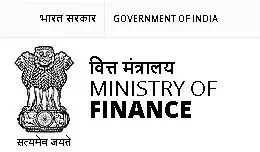India: Landmark judgement passed on institution of applications under IBC
India: Supreme Court declines to stay Karnataka HC ruling on tobacco pictorial warning
India: Digitization of existing Form No. 9 by the EPFO
Supreme Court stays proceedings related to GST on Lawyers & Law Firm
India: SEBI revokes ex-parte order
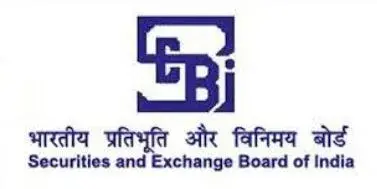 SEBI in a case related to insider trading has revoked its earlier direction.
SEBI in a case related to insider trading has revoked its earlier direction.
Finance Bill, 2018 highlights:
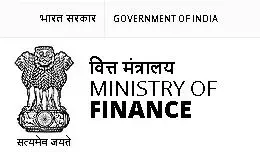
- Tax rates for individuals, HUF and Firms unchanged.
- It shall be mandatory to obtain PAN for all entities (including HUF other than individuals) and all directors, partners, members of such entities if the aggregate financial transactions done in a year by such entities amount to INR 2, 50,000 or more. Failure to do so will hold them liable to be prosecuted.
- The domestic companies which have a total turnover or gross receipts not exceeding INR 250 crores in the financial year 2016-17 will be taxed at 25%. Currently, this cap is at INR 50 crores in financial year 2015-16.
- A Health and Education Cess of 4% to replace existing 3% education cess on personal income tax and corporate tax.
- Income Computation and Disclosure Standards:
- ICDS is being given statutory backing.
- Profits or losses arising in foreign exchange in accordance with ICDS shall be allowed under new section 43AA.
- In accordance with ICDS, percentage completion method shall be applicable for computation of Construction Contract income.
- ICDS will also apply for valuation of inventory and securities.
- Securities Transaction Tax to be paid with respect to long term capital gains will be 10% under Section 112A and such tax will also be liable for tax deduction at source. Further, long-term capital gains with respect to listed Securities Transaction Tax paid shares being withdrawn will be exempted under section 10(38).
- Certain benefits which were currently provided such as transport allowance of INR 19,200 and Medical Reimbursement of INR 15, 000 are being withdrawn. Net benefit to salaries class shall be kept at INR 5, 800.
- As per existing law, if the tax liability of a company after TDS was less than INR 3,000, filing tax return was not mandatory. It is proposed to now make it mandatory for all companies to file Income Tax return irrespective of their taxable income, failing which the companies will be liable for prosecution.
- In the instance of failure to file financial return as required under section 285BA, penalty will be levied at an increased rate of INR 500 per day.
- As per the existing Section 80AC of the Income Tax Act, unless income tax return is filed by the assessee on or before the due date (under Section 139(1)), deductions would are not admissible under section 80-IA or section 80-IAB or section 80-IB or section 80-IC or section 80-ID or section 80-IE. It is now proposed in the budget to amend this provision to provide that with effect from April 1, 2018, the whole class of deductions under the heading ‘C—Deductions in respect of certain incomes’ in Chapter VIA shall not be allowed unless the return of income is filed by the due date.
- Standard Deduction in case of salaried employees will be INR 40,000.
- In the instances where stock in trade is converted to capital asset, the same shall be charged as business income in the year of conversion at a fair market value as on the date at which the conversion happens.
- Taxation of deemed dividend shall be done as Dividend Distribution of tax at the rate of 30% in the hands of the company itself.
India: Landmark judgement passed on institution of applications under IBC

Source : www.nclt.gov.in
Introduction
In proceedings with regards to the provisions of the Insolvency and Bankruptcy Code, 2016 (hereinafter referred to as ‘IBC’) the Bombay High Court has passed a landmark judgement ruling that an application under IBC may be made even in cases where a Winding-Up petition has been admitted by a Company Court. Such an Application under the IBC, would not be permitted, only in such a scenario where final order of Winding-Up has been passed under Section 481 of the Companies Act, 1956.
Brief Facts of the Case
Jotun Private Limited (hereinafter referred to as ‘the Appellant’) was an Operational Creditor of the company PSL Limited (hereinafter called ‘the Respondent’). On March 10, 2015 [1] the Appellant had filed a Company Petition claiming an unresolved sum with interest in respect of unpaid accounts for goods supplied. The Appellant through this means sought Winding-Up of the Respondent under Section 433 and 434 of the Companies Act, 1956. However, an Official Liquidator was not yet appointed since all assets were secured. The Court stated that it would appoint such liquidator at a later stage depending on the requirement.
On June 19, 2015, during the pendency of the above petition, the respondent approached the Board for Industrial and Financial Reconstruction (BIFR)under the Sick Industrial Companies (Special Provisions) Act, 1985 (SICA). However, SICA got repealed after the implementation of IBC, 2016. The IBC granted a window/time limit for all pending cases before BIFR to be filed before the NCLT. Thereafter, the respondent filed an application before the NCLT, Ahmedabad under Section 10 of IBC, 2016, for corporate insolvency resolution process.
The appellant immediately filed a Company Application in the Bombay High Court seeking the appointment of a Provisional Liquidator. After hearing the case in length, a single Judge bench of the Bombay High Court passed an order restraining NCLT, Ahmedabad, from continuing with the application filed by the Respondent. Thereafter, the respondent filed an application before the Bombay High Court to recall the above order.
The question before the Bombay High Court in this case was whether the Court (or any Company Court for that matter) has jurisdiction to stay proceedings filed by a Corporate Debtor before the National Company Law Tribunal (hereinafter referred to as ‘NCLT’), even though a previously instituted Company Petition was admitted, but where a Provisional Liquidator had not been appointed.
Judgement
The Bombay High Court has observed that, while under the Companies Act 2013, Winding-Up would be a matter for the Court alone to decide, under IBC, Creditors Committee is left to decide the fate of the company. [2]The provisions of the Companies Act 1956 Act, the Companies Act 2013 Act and IBC must be read in a harmonious and purposive manner. The Hon’ble Bombay High Court relying upon the judgement of Supreme Court of India in the case of Madura Coats Ltd. (Supra) [3] held that before it was repealed, SICA was held to have primacy over the provisions of the Companies Act. But through the benefit of Section 252 of IBC, SICA stood repealed with effect from December 1, 2016. Under Section 4 (b) of the Repealed Act, all proceedings before the Board for Industrial and Financial Reconstruction/Appellate Authority for Industrial and Financial Reconstruction stood halted and in respect of such halted proceedings, provision have been made to permit a Company, to make a reference to NCLT within a period of 180 days from December 1, 2016 to NCLT, where reference is required to be dealt with in accordance with the provisions of IBC.
Moreover, since the IBC is admittedly a replacement to SICA, and Section 64 (2) of IBC being pari-materia to Section 22 of SICA, the contention that the Company Court has power to order injunction in proceedings before NCLT in cases of pending winding up petitions is entirely erroneous and contrary to legislative intent. Thus it was ultimately held that, there was no bar on NCLT, Ahmedabad from proceeding with IBC application.
In the same judgment, the Court has also held that,
“Winding up petitions retained by the High Court are being decided under the Companies Act, 1956, only as a transitional provision. Which cannot in any way affect the remedies available to a person under IBC, as the same would amount to treating IBC as if it did not exist on the statute book and would deprive persons of the benefit of the new legislation. But even in such a case, there is no express or implied bar from other creditors of such company or the corporate debtor from filing fresh proceedings under IBC.”
Conclusion
Thus, we see that this case has not only held up the primacy of the Insolvency and Bankruptcy Act 2016, but has also cleared the position as to the overlapping provisions of the Companies Act as to insolvency and winding up. What remains to be seen is whether this judgment gives rise to a situation wherein a race would ensue between filling a winding up application and an Insolvency Petition between the parties, keeping the newly formed IBC in sight, which has been considered as the primary tool for dealing with cases related to winding up, insolvency and resolution process.
____________________________________
[1]Psl Limited vs Jotun India Pvt. Ltd
[2]BHC C.A. no. 572 of 2017 in C.P. no. 434 of 2015
[3](2004) 4 SCC 311 para 41
India: Supreme Court declines to stay Karnataka HC ruling on tobacco pictorial warning
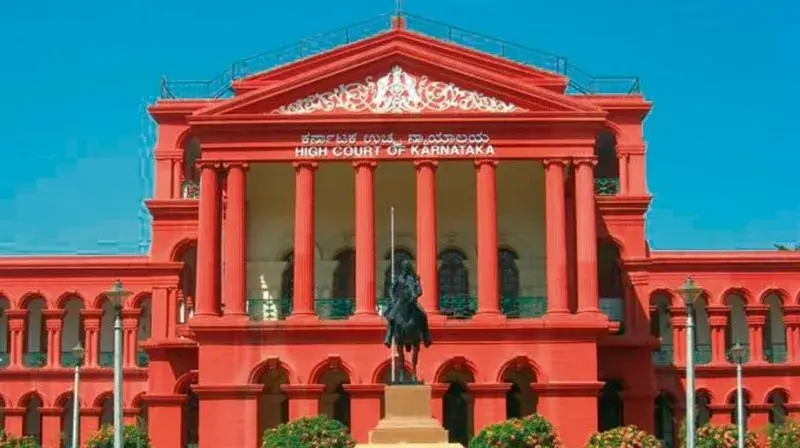
Source : www.karnatakajudiciary.kar.nic.in
Cigarette packages in most countries carry a health warning, however, the position, size and general strength of these warnings vary considerably across jurisdictions.[1] For example, it is a statutory requirement in countries like Canada, Brazil, Singapore, Thailand, Australia, amongst others. India became a member of this list in 2009 with the notification of Cigarettes and other Tobacco Products (Packaging and Labelling Rules), 2008, in the Official Gazette on November 28, 2008, and came into force on May 31, 2009. In the 2008 Rules, it was a statutory requirement to display health warnings which would take at least 40% of the principal display area on the cigarette package. [2]
The 2008 Labelling Rules were amended in 2014, which were notified on October 15, 2014, and came into force on April 1, 2015. As per the new Rules, the health warning shall cover at least 85% of the principal display area of the package of which 60% shall cover pictorial health warning and 25% shall cover textual health warning.[3]
The Karnataka High Court quashed the said rule regarding 85% warning on principal display area as arbitrary, unreasonable and also said that the amended rules lacked empirical data. NGO named Health for Millions Trust filed a Special Leave Petition in the Supreme Court against the order of the Karnataka High Court. The Supreme Court while quashing the order of the Karnataka High Court said “though a very structural submission has been advanced by the learned counsel for the respondent that it will affect their business, we have remained unimpressed by the said
“health of a citizen has primacy and he or she should be aware of that which can affect or deteriorate the condition of health.” The Court went on to say that “deterioration may be a milder word and therefore, in all possibility the expression ‘destruction of health’ is apposite”.[4]
Health warning to labels on tobacco products constitute the most cost-effective tool for educating smokers and non-smokers alike about the health risks of tobacco use. The evidence for greater potential impact of pictorial warnings have come from focus groups and interview studies and population based surveys among Canadian smokers.[5] It has also been found that when taken as a whole, the research on pictorial warnings show that they are:
- more likely to be noticed than text-only warnings labels; [6]
- more effective for educating smokers’ thoughts about the health risks and
- associated with increased motivation to quit smoking. [8]
While there are many advantages of putting a pictorial warning on the principal display area of the packet, including but not limiting to the direct message it sends to the users looking at the cigarette packet and the deep impact it has on the mind of the people who have just begun smoking cigarettes; there are certain disadvantages also. These disadvantages include the negative publicity that the companies receive due to such warnings. The business of the company as a whole is also affected because, more the number of people who see those warnings on the packages, the more the number of people will at least try to refrain themselves from smoking, thus, affecting the revenues of the tobacco companies. This is one of the main reasons as to why tobacco companies oppose such laws regulating the size of the warning to be displayed on the packages of tobacco products. The other reason for opposition of such regulation is that the tobacco companies fear that their Right to Practice any profession, or to carry on any occupation, trade or business is being infringed by such regulations of the Government. In this regard, the Government claims and contends that such regulations are not infringement of the rights of the tobacco companies but it is a reasonable restriction put on them under Article 19 (6) [9] of the Constitution of India. The State contends that smoking is not in the interest of the general public and therefore, putting reasonable restriction is just and valid. Keeping this in mind, smoking in public places is also banned.
The matter [10] is up for final hearing on March 12, 201.
__________________________________
[1] http://www.who.int/bulletin/volumes/87/8/09-069575/en/
[2] Rule 3(1)(b), Cigarettes and Other Tobacco Products (Packaging and Labelling) Rules, 2008.
[3] Rules 3(1)(b), Cigarettes and Other Tobacco Products (Packaging and Labelling) Amendment Rules, 2014.
[4] Health for Millions Trust v Union of India & Ors. (SLP (C) 37348/2017).
[5]Hammond D, Fong GT, Borland R, McNeill A, Cummings KM, Hastings G. Effectiveness of cigarette warning labels in informing smokers about the risks of smoking: findings from the International Tobacco Control (ITC) Four Country Survey. Tob Control 2006; 15: iii19-25 doi: 10.1136/tc.2005.012294 pmid: 16754942.
[6] http://onlinelibrary.wiley.com/doi/10.1111/j.1360-0443.2009.02508.x/
abstract;jsessionid=73714F3A8F3C376B7F6890809275B751.f04t03
[7] ibid
[8] Article 19(1)(g), Constitution of India, 1950.
[9] Article 19(6): Nothing in sub-clause (g) of the said clause shall affect the operation of any existing law in so far as it imposes, or prevent the State from making any law imposing, in the interests of the general public, reasonable restrictions on the exercise of the right conferred by the said sub-clause, and, in particular, nothing in the said sub-clause shall affect the operation of any existing law in so far as it relates to, or prevent the State from making any law relating to,
- the professional or technical qualifications necessary for practicing any profession or carrying on any occupation, trade or business, or
- the carrying on by the State, or by a corporation owned or controlled by the State, of any trade, business, industry or service, whether to the exclusion, complete or partial, of citizens or otherwise.
[10]Supra at pt. 4.
India: Digitization of existing Form No. 9 by the EPFO
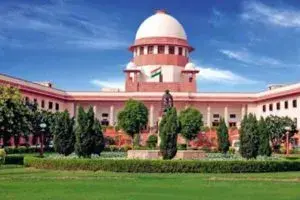
Source : www.labour.gov.in
Introduction
The Employee’s Provident Fund Organization, Ministry of Labour & Employment, had issued a circular on January 23, 2018, regarding the digitization of existing Form No. 9.
[1]
For the purpose of digitization of physical Form No. 9Accordingly, the following steps are to be followed to digitize physical Form No. 9 –
- Scanning of physical Form No. 9 and upload the same in the system
- Approval of scanned copy of Form No. 9
- Approval of member data available in the system
- Archiving the scanned Form-9 duly indexed for reference.
A look at the above points in detail as given in the circular –
Scanning of physical Form No. 9 and upload the same in the system
A functionality has been devised to upload scanned copy of the Form No. 9 documents available in the field offices. This task is a one-time activity. Scanning of documents would be done by Dealing Assistants as they are the sole custodians of Form- 9 documents. Scanned documents in zip format, would be uploaded using Establishment>>Transaction>>Form-9 SCANNED COPY functionality in UPLOAD role.
The staffs may be provided training as per the requirements of the office with EDP staff and ANOCs. Arrangements for adequate number of PCs support along with the scanners must be done by the field offices to handle the work.
Utilization chart may be prepared for each PC with Scanner in advance. Different folders for each Dealing Assistant may be made in group folder so that Dealing Assistants will save scanned documents in the specified location.
Approval of scanned copy of Form- 9
A functionality is provided at Establishment>>Masters>>SCANNED FORM9 FOR APPROVAL at DA-Accounts. Thereafter, the DA shall initiate the task and AO (Accounts) will approve the same once the scanned copy is found with respect to physical Form–9 copy.
Approval of member data available in the system
A functionality to generate an e-Form 9 for the establishments/ members joining EPF Scheme on or after October 1, 2017 has been provided in the EPFO application software vide version No. 5.68 dated September 22, 2017.
This facility has been extended to generate e-Form-9 for the members/Establishments joined on or after April 1, 2012 in the EPF application software vide circular No. NOC/APPLDEV/2017/e¬Form 9 dated November 15, 2017.
It is further decided that the system will generate the e-Form No. 9 for all establishments/ members available in EPFO database prior to Oct 2017 once member details are AO Accounts. In other words, the functionality to approve e-Form 9 data i.e. “Approve e-Form 9 data (April 2012 to Sep 2017)” has be renamed as “Approve Form 9 prior to October 2017” along with necessary changes in the logic.
Accordingly, e-Form 9 generation functionality has also been renamed as “Generate e-Form 9 prior to October, 2017.”‘
Archiving the scanned Form 9 duly indexed for reference
Once the scanning and approval of data is completed, the physical Form 9 pertaining to those establishments may be archived and stored in the record room/go-down, duly indexed for easy retrieval, in case of requirement for dealing with any legal/vigilance issues.
____________________________________________
[1] https://www.labourlawnews.com/epfo-digitize-existing-form-no-9-
documents-prior-1st-april-2012/digitization-of-existing-form-no-9/
Supreme Court stays proceedings related to GST on Lawyers & Law Firm
Source : www.supremecourtofindia.nic.in
Introduction
The Supreme Court on January 22, 2018 stayed the proceedings in Delhi and Chhattisgarh High Courts relating to the applicability of Goods and Services Tax (GST) to legal services in the case of Union of India Vs M/S JK Mittal & Co. (Transfer Petition (Civil) No. 2460-2462/2017). The Court passed the order to that effect in a transfer petition filed by the Central government seeking transfer of cases pending in the two High Courts to the Supreme Court.[1]
Brief Facts
In a petition filed by JK Mittal, the Delhi High Court had ordered that GST registration will not be applicable for lawyers and law firms for any legal service. The Court also held that the said order would prevail unless clarification about whether all legal services provided by legal practitioners and firms would be governed by reverse charge mechanism.
A Notification No. 13120 17- B-Central Tax (Rate) dated June 28, 2017 as well as Notification No. 1312017-State Tax (Rate) dated June 30, 2017 was issued by the Central Government wherein a “reverse charge” had been made applicable to recipients of services rendered by all lawyers, law firms and Senior Advocates. With regards to the said notifications, the petitioners had contended that the notifications issued by the Central government are in violation of the provisions of the CGST Act and DGST Act read with Article 279A of the Constitution of India and has adverse consequences on those practicing the legal profession. As per the provisions of Article 279A (brought in by the Constitution 101st Amendment Act of 2016), the various rates and slabs for GST under the CGST Act would be made only on the basis of the recommendations of the GST Council.
The petitioner questioned why lawyers should be charged GST when the Council had recommended that legal services would be amenable only to a “reverse charge”. The petitioner also contended that a legal practitioner, already registered under the Finance Act, 1994 (he registered in 2011) would have to be exempted from registration under the GST laws under Section 23 (2) read with Section 22 (2) of the CGST Act and corresponding provisions of the IGST Act and DGST Act.
Findings of the Court
After careful consideration of the case, the High Court framed the question –
“Whether legal practitioners providing both representational and non-representational services would be required to register under the respective GST Acts if they were already previously registered under the Finance Act?”
The Court held that there was no clarity on whether all legal services provided by legal practitioners and firms would be governed by the reverse charge mechanism. If in fact, all legal services are to be governed by the reverse charge mechanism, then there would be no purpose in requiring legal practitioners and law firms to compulsorily get registered under the CGST, IGST and DGST Acts. With respect to the question raised, the Court directed the concerned authorities to provide clarification to the Court. Further, the Court held that till such clarification is provided to the Court, no coercive action shall be taken against lawyers or law-firms for not complying with any legal requirement under the CGST Act, the IGST Act or the DGST Act.
Therefore, the Court held that till the final hearing of the case, there will be no GST registration for lawyers and law firms for any legal service and issued a notice in the Centre’s transfer petitions and stayed the proceedings in both the High Courts of Delhi and Chhattisgarh as provided below –
“Issue notice fixing a returnable date within four weeks. There shall be stay of further proceedings in Writ Petition(C) No.5709 of 2017 and Writ Petition(C)No.6017 of 2017 pending before High Court of Delhi and Writ Petition(T)No.274 of 2017 pending Chhattisgarh.”
[1] https://barandbench.com/gst-lawyers-law-firms-supreme-court/
India: SEBI revokes ex-parte order

Source : www.sebi.gov.in
Introduction –
The Securities and Exchange Board of India (hereinafter referred to as ‘SEBI’), in a recent order, has revoked its directions against seven former officials of Multi Commodity Exchange Ltd (hereinafter referred to as ‘MCX’), for alleged involvement in insider trading.
SEBI found no merit in an ex parte order passed in the previous hearing, thereby undoing the damage and revoked the directions passed in that order.
On August 2, 2017, by an ex-parte order, SEBI had earlier held that 8 persons, who were promoters or directors or management personnel of MCX, had committed insider trading in the shares of MCX. Through this order, SEBI not only prohibited these 8 persons from dealing with their assets but also impounded what he called losses avoided by these persons.
This SEBI order was then appealed before the Securities Appellate Tribunal (hereinafter referred to as ‘SAT’), where the SAT directed SEBI to pass a final order as expeditiously as possible.
Brief facts of the case –
- The Department of Consumer Affair granted exemption to National Spot Exchange Limited (hereinafter referred to as ‘NSEL’), a subsidiary of Financial Technologies India Limited (FTIL) and a group company of MCX, from the operation of Forward Contracts (Regulation) Act, 1952, for all forward contracts of one day duration for the sale and purchase of commodities traded on its platform subject to certain conditions. Thereafter, the Forward Markets Commission (FMC) (now merged with SEBI) was notified as the designated agency for submission of all information.
- Upon analysis of returns and information filed by NSEL, the FMC prima facie was of the view that NSEL has failed to fulfil the conditions stipulated for exemption and informed the same to the DCA.
- On April 27, 2012, the DCA issued a Show Cause Notice (SCN) to NSEL as to why action shouldn’t be taken against it for violation of the conditions.
- The contents of this show cause notice, however, become public only later through an article published in Economic Times on October 3, 2012.
- On July 31, 2013, NSEL suspended trading in all contracts and deferred settlement of all pending contracts.
Allegations of insider trading, however, were made in respect of MCX, which was an associate company of NSEL, since, both shared the same parent entity, FTIL, and to a great extent, shared the same management.
SEBI’s interim order –
SEBI in its order dated August 2, 2017, had found that 8 persons, all directors or senior officials of MCX at the relevant time, had:
- known about the SCN issued by the DCA to NSEL on April 27, 2012; and that
- they sold the shares, on the basis of Unpublished Price Sensitive Information (UPSI) held by them in MCX before the Government of India withdrew the exemption granted to NSEL from application of the FCRA, to avoid losses.
According to SEBI, the information relating to the implication of the SCN, that the exemption may be withdrawn was UPSI in respect of shares of MCX.
SEBI found that the UPSI became public when on the directions of the Government, NSEL suspended all trading on July 31, 2013. Thus, all trades during the period April 27, 2012 to July 31, 2013 were considered by him as being ‘Insider Trading’, fulfilling the conditions laid under SEBI (Prohibition of Insider Trading) Regulations, 1992 (PIT Regulations).
SEBI’s final order –
The questions that arose before SEBI were:
- Whether the implication of the SCN dated April 27, 2012, issued by DCA to NSEL, was price sensitive information in respect of MCX?
On this point, SEBI agreed with the previous order, that since FTIL was the holding company of both MCX and NSEL, the knowledge of the implication of the SCN was in fact, price sensitive. - Whether the price sensitive information was unpublished and if so, when did it get published?
This is where SEBI differed from its earlier findings and noted that the article published in the ET on October 3, 2012 had mentioned about the said SCN and the possibility that the Government could have withdrawn the exemption granted to NSEL.Therefore, the UPSI became public knowledge on October 3, 2012 and not on July 31, 2013.
As a result, the period during which trades by an insider could be prohibited was reduced to April 27, 2012 to October 3, 2012 instead of Raman’s calculation which extended to 31 July, 2013. - Which of the Noticees traded in the scrip of MCX during the period when the price sensitive information remained unpublished?
Basis the new time period for committing insider trading, out of the 8 persons in Raman’s order, only 1 – Mr. Massey traded in that period. - Which of the Noticees violated the provisions of Regulation 3(i) and Regulation 4 of the SEBI (PIT) Regulations and Section 12A (d) of the SEBI Act when they traded when in possession of UPSI?
SEBI accepted Massey’s submission that his trades were done with prior approval of and after disclosure to MCX and to the world at large (disclosed upfront in the Prospectus dated February 28, 2012 that he would be selling 10,000 shares post IPO within 3 months of the IPO)
and therefore, could not have been based on the UPSI.
Thus, the directions against 7 out of the 8 persons have been revoked.
SEBI said it will pass a separate order in respect of Hariharan Vaidyalingam, who was the eighth person to face SEBI’s interim action in MCX matter.


